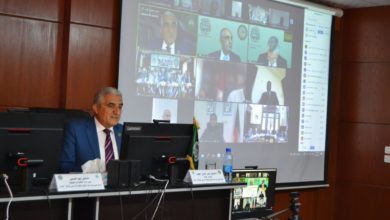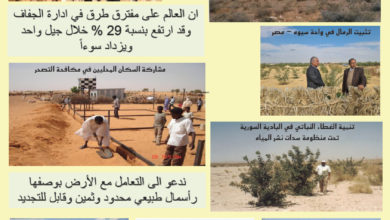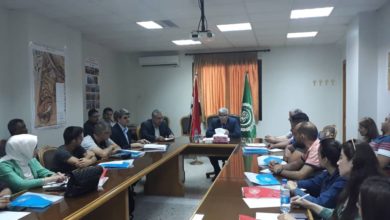Laboratory analysis of forage materials / a training course at ACSAD Organization.
At the headquarters of the Arab Centre for the Studies of Arid Zones and Drylands (ACSAD) in Damascus, a training course on “Laboratory Analysis of Forage Materials” has launched today for a number of agricultural engineers from the staff of the State Fodder Foundation of the Syrian Ministry of Agriculture and Agrarian Reform, to familiarize them with the best techniques used in the laboratory analysis of forage materials.

In an address at the opening of the session, in the presence of Professor Ahmed Saleh Al-Ibraheem, President of the General Union of Syrian Peasants, Director-General of the General Foundation for Fodder, Engineer Abdul Karim Shebat, Director-General of the Syrian Badia Development Authority, Director of Animal Production in the Ministry of Agriculture, representatives of the General Commission of scientific Agricultural Research and a large number of Syrian and Arab experts. The General- Director of ACSAD, Dr. Nasr Obaid, confirmed that The Arab world possesses a wide variety of livestock that emerge it as the world’s leading producer of over 350 million livestock heads.
He pointed out that ACSAD had recorded numerous scientific results and achievements in applied technologies, such as the manufacture of feed of high nutritional value. It had also prepared a project to manufacture the fodder from agricultural waste, food industry residue, improve its nutritional value, and manufacture some of the machinery for agriculture waste in Sudan, Tunisia, Saudi Arabia, Qatar ACSAD is working on manufacturing it in Syria.
He clarified that the increase in fodder imports in the Arab region had reached more than 9.5 million tons, valued at more than $3.5 billion, which had led ACSAD to prepare feed budgets for the Arab countries for decades, most recently in 2005, in particular, the issuance of the Syrian forage budget and identifying the gap between the need and availability.
Dr. Obaid noted that ACSAD is updating the Syrian fodder budget to show how large the fodder gap is. Therefore, compensation with feed, protein, and energy must be made through imports or maximizing the role of agricultural and industrial food waste to raise its nutritional values, increase protein and energy to fill a large part of the feed gap and reduce the role of imports.
He emphasized that this training course was essential in supporting, developing, and defining a clear scientific strategy for developing livestock, in line with the nutritional needs necessary to improve production rates and raise fodder’s benefits efficiency.
The course lasts three days, and its applied scientific program includes several axes, including an introduction on the Biotechnology and Laboratory Section in ACSAD, the fodder, and its types, its relationship to animal nutrition and digestion experiments, collection and preparation of forage samples, basic estimates of forage analyses, moisture estimation, and dry matter calculation.
The program also includes axes relating to the determination of total ash, the determination of large, micro, and heavy metallic elements, the determination of fat, the determination of protein – the Kjeldahl method, the measure of energy, the determination of crude fibers – the assessment of fiber in the Vincest method, and the evaluation of samples based on laboratory results and recent tests.
Selected specialized experts conduct the applied scientific and practical training from the Arab Centre (ACSAD) with high competence and qualification at the Arab and international levels.



